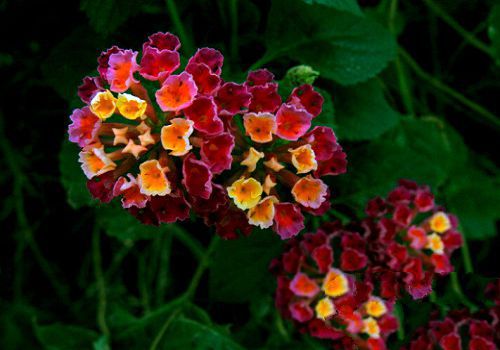Fertilization management of potted flowers in courtyard in September

September is the period of exuberant growth of most flowers, some dormant and semi-dormant flower species in summer, with the gradual cooler temperature, also began to restore growth, this month should attach great importance to fertilization management.
Five-colored plum
For foliage plants, such as tortoise back bamboo, rubber tree, wealth tree, Brazilian wood, spring feather, brown bamboo, ash ash, cinnamon, money tree (dragon and Phoenix wood), Nanyang fir, fish tail sunflower, green apple, red (green) gem, green emperor, silver queen, bamboo taro, synthetic taro, fir, etc., it is still dominated by low concentration of light fertilizer, such as 0.3% urea, etc. For flowers and trees with special flowering or full flowering in autumn, such as rose, tricolor plum, five-colored plum, pomegranate, crape myrtle, Milan, blue blue, jasmine, four seasons cinnamon, cinnamon, sweet-scented osmanthus, etc., ornamental plants such as daidai, Phyllostachys pubescens, cinnabar root, firethorn, papaya, golden marbles, purple beads, fruit pomegranate, etc., colorful leaf plants such as variable leaf wood, gold-sprinkled peach leaf coral, pineapple, flower leaf banyan, Phnom Penh Brazil wood, Zhu banana, colored leaf grass, etc. Fertilizer types with balanced application of nitrogen, phosphorus and potassium should be applied.
For the resuming growing crabapple, geranium, calla lily, cyclamen, four seasons begonia, Daphne, crab claw orchid, sedum, purslane (jade leaf), purple triangle leaf sorrel, gentleman orchid, arrow lotus, etc., low concentration liquid fertilizer can be restored. For flowers that have completed flower bud differentiation and entered the stage of flower bud expansion, such as Camellia, Camellia, Chimonanthus, Plum, Michelia, rhododendron, etc., low concentration nutritionally balanced fertilizers can be applied to potted grass flowers, such as red, marigold, chrysanthemum, chrysanthemum, dahlia, pocket sunflower, etc., thin fertilizer can be applied every 10 days to meet the needs of their pregnant buds and next month's flowering.
Related
- What if the leaves of potted flowers turn yellow?
- Florescence Control of several Flowers
- Anti-freezing technology and post-freezing nursing technology of flowers
- What is the classification of flowers? What are the common methods of flower classification?
- Prevention and control of alkali and acid damage of flowers in courtyard
- Technology of Anti-freezing and restoring growth of Flower seedlings in greenhouse and greenhouse
- How does flower fertilization not hurt the root? Fertilization technology of flowers
- Key points of disinfection in flower greenhouse
- Several pesticides that are banned or used cautiously in flowers
- How to fertilize the flowers that watch the leaves?


